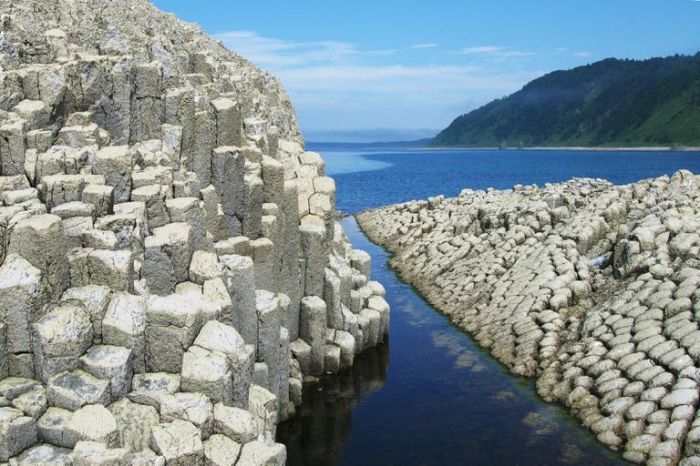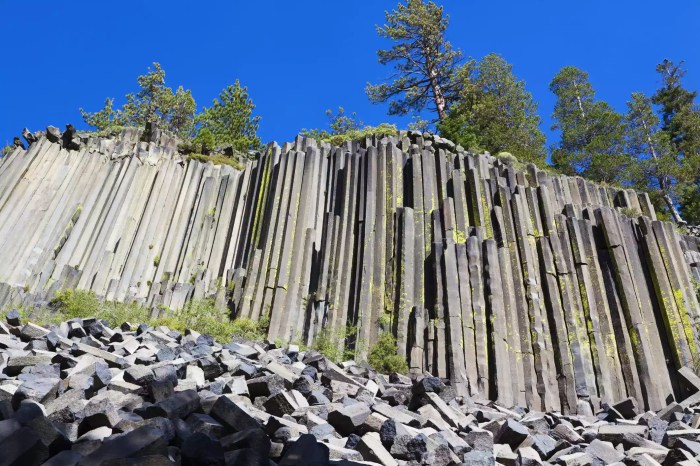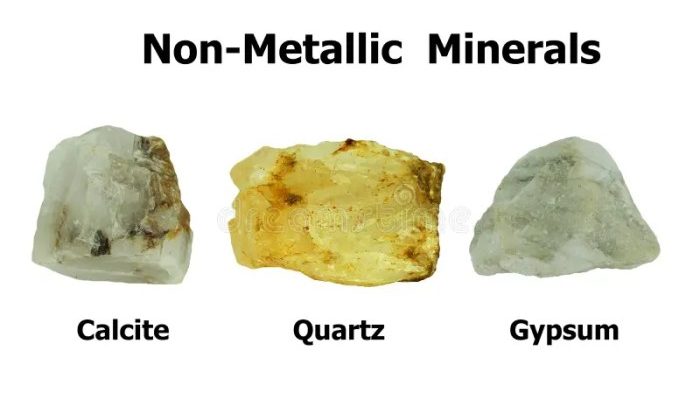The photograph shows hexagonal basalt columns on a mountain, revealing a captivating geological formation that has intrigued scientists and nature enthusiasts alike. These columns, formed through a unique interplay of volcanic activity and environmental conditions, offer a glimpse into the Earth’s dynamic history.
Hexagonal basalt columns are geological wonders that have captured the imagination of humankind for centuries. Their distinctive shape and striking appearance have inspired awe and wonder, while their scientific significance has contributed to our understanding of Earth’s geological processes.
Geological Formation: The Photograph Shows Hexagonal Basalt Columns On A Mountain

Hexagonal basalt columns are formed through a unique geological process involving the cooling and contraction of lava. When molten lava erupts from a volcano and flows over the land, it gradually cools and solidifies. As the lava cools, it undergoes a process of contraction, causing it to crack and fracture.
The shape and size of these fractures are influenced by the rate of cooling and the viscosity of the lava.
The ideal conditions for the formation of hexagonal basalt columns include a slow and uniform cooling rate, which allows the lava to cool and contract gradually. This process results in the formation of evenly spaced, polygonal fractures that create the characteristic hexagonal shape.
Characteristics and Structure
Hexagonal basalt columns are typically characterized by their distinct shape and size. They are usually vertical or near-vertical, with a hexagonal cross-section. The columns can vary in height from a few meters to over 30 meters, and their diameter can range from a few centimeters to several meters.
The shape of the columns is influenced by the cooling and contraction process. As the lava cools, it contracts and cracks along lines of weakness. The cracks propagate perpendicular to the cooling surface, resulting in the formation of polygonal fractures.
The hexagonal shape is favored because it minimizes the surface area and reduces the amount of energy required to fracture the lava.
The internal structure of hexagonal basalt columns is typically composed of fine-grained basalt. The columns are often jointed, with fractures that divide them into smaller blocks. These joints can be caused by further cooling and contraction, or by tectonic forces.
Distribution and Locations
Hexagonal basalt columns are found in various geographical areas around the world. They are commonly associated with volcanic regions and can occur in different geological settings, such as lava flows, volcanic necks, and volcanic plugs.
Some notable locations with well-preserved hexagonal basalt columns include:
- Giant’s Causeway, Northern Ireland
- Devil’s Tower, Wyoming, USA
- Reynisfjara Beach, Iceland
- Staffa Island, Scotland
- Uluru (Ayers Rock), Australia
Scientific Significance, The photograph shows hexagonal basalt columns on a mountain
Hexagonal basalt columns are important in understanding geological processes. They provide evidence of past volcanic activity and can help geologists determine the age and composition of lava flows. The study of hexagonal basalt columns has also contributed to the understanding of cooling and contraction processes in igneous rocks.
Additionally, hexagonal basalt columns have paleomagnetic significance. They can record the Earth’s magnetic field at the time of their formation, providing valuable information about the history of the Earth’s magnetic field.
Cultural and Aesthetic Impact
Hexagonal basalt columns have had a significant cultural and aesthetic impact throughout history. They have inspired awe and wonder in people, and have been featured in art, architecture, and mythology.
In many cultures, hexagonal basalt columns have been associated with supernatural powers or deities. They have been used as religious sites and have been incorporated into architectural structures, such as churches and castles.
The unique shape and beauty of hexagonal basalt columns continue to captivate people today. They are popular tourist destinations and are often photographed and admired for their natural beauty.
Top FAQs
How are hexagonal basalt columns formed?
Hexagonal basalt columns are formed when lava cools rapidly, causing it to contract and fracture. As the lava cools, it forms polygonal columns, which are typically hexagonal in shape due to the way the fractures interact.
Where are hexagonal basalt columns found?
Hexagonal basalt columns are found in various locations around the world, including the Giant’s Causeway in Northern Ireland, the Devil’s Postpile National Monument in California, and the Fingal’s Cave on the Isle of Staffa in Scotland.
What is the significance of hexagonal basalt columns?
Hexagonal basalt columns are significant because they provide insights into the Earth’s geological history and the processes that have shaped our planet. They are also important for paleomagnetism, the study of the Earth’s magnetic field over time.



